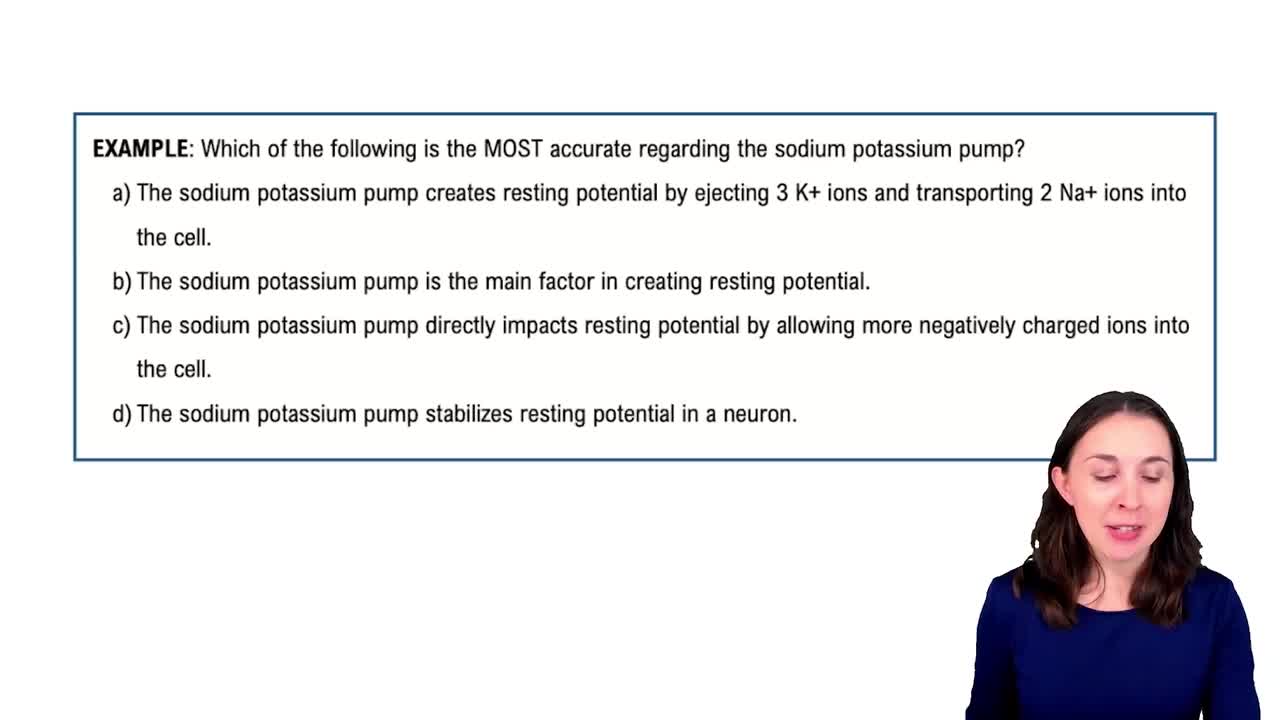Resting Membrane Potential definitions Flashcards
 Back
BackResting Membrane Potential definitions
1/15
Terms in this set (15)
- Resting Membrane PotentialVoltage difference across a neuron's membrane when inactive, typically around -70 millivolts.
- Central Nervous SystemPart of the nervous system consisting of the brain and spinal cord.
- SodiumIon with higher concentration outside the cell, contributing to membrane potential.
- PotassiumIon with higher concentration inside the cell, crucial for resting potential.
- Ionic CompositionDistribution of ions inside and outside the cell affecting membrane potential.
- Plasma Membrane PermeabilityCell membrane's ability to allow ions to pass through, influencing potential.
- Leak ChannelsChannels allowing ions to passively move across the membrane, affecting potential.
- Sodium-Potassium PumpProtein that maintains ion gradients by ejecting sodium and importing potassium.
- Concentration GradientDifference in ion concentration across the membrane driving diffusion.
- DiffusionMovement of ions from high to low concentration, influencing membrane potential.
- Negatively Charged ProteinsProteins inside the cell contributing to its negative interior charge.
- CytosolFluid component inside cells where negatively charged proteins reside.
- Goldilocks ZoneOptimal balance of ion concentrations for stable resting potential.
- NeuronNerve cell that transmits electrical signals, maintaining resting potential.
- Charge SeparationDifference in charge between the inside and outside of the cell membrane.


